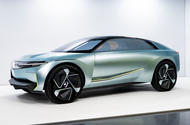The Experimental’s front end emphasises a hot-cross-bun shape called the ‘Compass’
“Vauxhall 2.0” begins with Astra-sized coupé SUV and emphasis on futuristic technologies
The radical new Vauxhall Experimental concept provides the first look at what its design chief calls “Vauxhall 2.0”, previewing how the brand’s design signatures will evolve as it gears up for all-out electrification in 2028.
This Astra-sized coupé-SUV is the envisioned climax of a transformation taking place over the coming years as Vauxhall looks to launch a totally new line-up of electric cars based on parent company Stellantis’s modular STLA platform. It follows similarly futuristic concepts from sibling Stellantis brands Peugeot, Lancia and Chrysler, which have previewed the functionality of this upcoming wave of STLA-based EVs.
The concept builds on the foundation laid by the 2018 GT X Experimental, the sharp-edged crossover that introduced design chief Mark Adams’ “bold and pure” philosophy. With that language – notably the ‘Compass’ front end and the ‘Vizor’ grille signature – now rolled out across the range, the time has come for the next stage, said Adams.
The most significant development is the new Compass, a much more dramatic interpretation of a relatively subtle design element on today’s Vauxhalls.
The strong central crease that runs through each car’s bonnet has been highlighted with a strip of LEDs, divided into ‘north’ and ‘south’ sides by the Vizor grille. Meanwhile, the arrow-shaped daytime-running lights on today’s Vauxhalls have been replaced by flat bars that are bright enough to provide sufficient low-beam illumination on their own. Small banks of LEDs are nestled in the corner below each bar, providing high-beam functionality when needed.
The four elements – the ‘north’ and ‘south’ centre lines and the ‘east’ and ‘west’ running lights – do not meet but point to the brand’s griffin emblem.
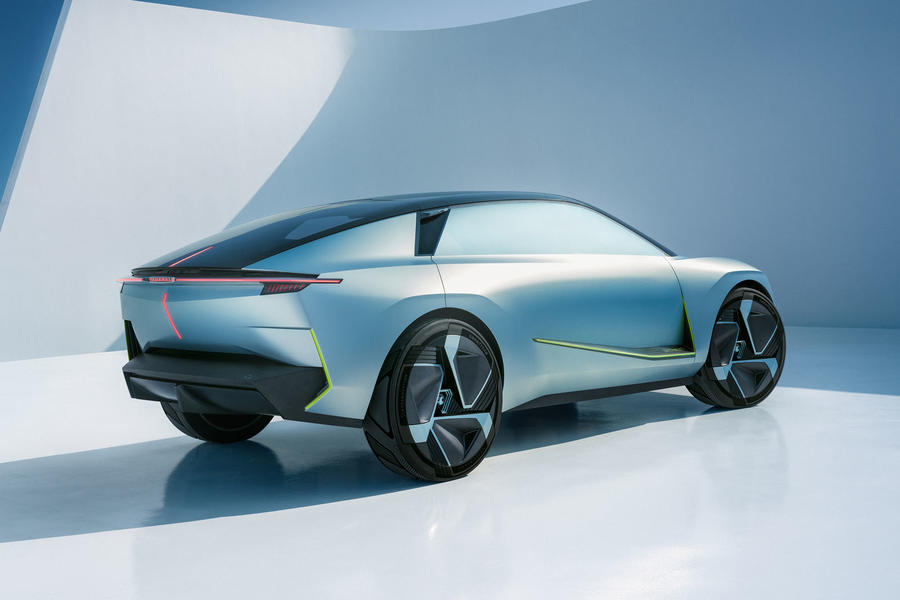
The Compass is mirrored at the rear, where a wordmark features in place of the logo to “really be confident about where we are as a brand going forward”, according to Adams.
He said the Compass has come to represent more for Opel-Vauxhall than mere design flair: “[CEO] Florian Huettl uses the word and the principles of the compass when he’s talking about the direction of the company because it all fits. It’s not just a design element. It says with confidence that we know where we’re going.”
Although the Compass has been emphasised, the Vizor has taken a back seat. According to Adams, the Vizor was originally conceived in part to neatly conceal all the sensors and cameras required for advanced driver assistance systems (ADAS). He wanted to avoid the “scattergun effect” of highly visible devices on the front of many current cars, including some costing hundreds of thousands of pounds. However, as the technology improves, sensors become smaller and more flexible, so they no longer need to be hidden away behind a gloss black panel.
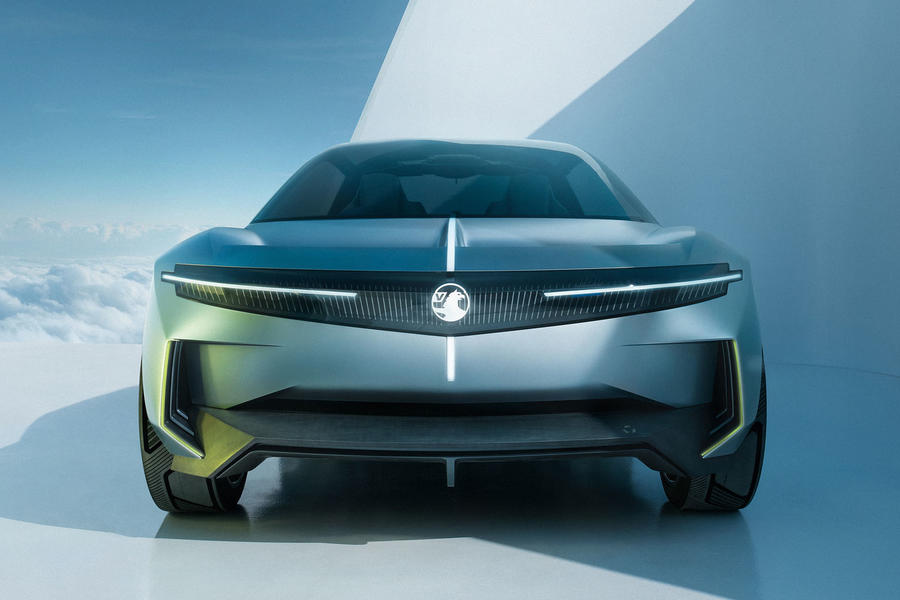
As such, the Vizor is now a transparent panel featuring vertical bars of LEDs, similar in appearance to the Skoda Enyaq iV’s ‘crystal’ grille. It protrudes from the front bumper with creases that meet at a central point in front of the griffin emblem, strengthening the Compass signature.
Notable for its absence is chrome, a material that has more recently come under scrutiny due to carcinogenic emissions from its production.
Inside, the Experimental is a clear departure from today’s Vauxhalls, and while the concept’s designers have taken a typically exaggerated approach to cabin design, it provides a clear, overarching view of Vauxhall’s future priorities. Every screen has been replaced by holographic interfaces, for example, and head-up-display projections span the full width of the windscreen, “dematerialising the interior”.
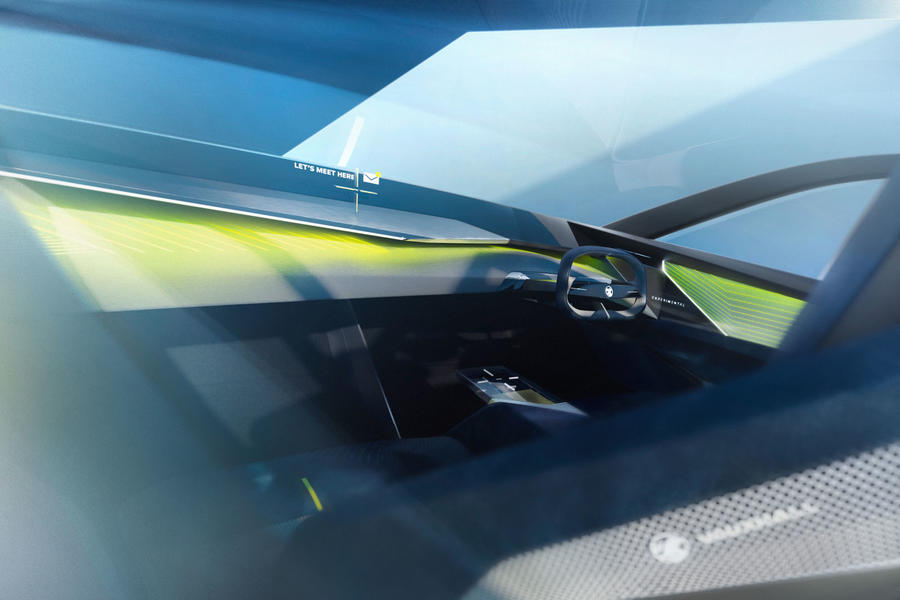
Critical functions are controlled using a panel of buttons on the centre console, while gestures and voice instructions are used for infotainment.
Unusually, the sat-nav system does not project arrows onto the windscreen head-up display. Instead, it enters a mixed-reality mode in which the driver is virtually escorted by the Opel Manta GSe Elektromod – a nod to the firm’s plan to revive the Manta name for a coupé-SUV in 2025.
The interior is trimmed in white electrochromic fabric, which is made from textile fibres interwoven with thin LED strands. Every surface that uses the material – the dashboard, seats, door cards and more – can be lit in any colour desired, for greater personalisation. It means that Vauxhall could theoretically build its cars with a single interior colour at the factory, leaving it up to the driver to set the colour.
The Experimental also nods to Vauxhall’s plans to eventually offer self-driving functionality, with the steering wheel folding into the dashboard when the computer takes control. Adams suggested the concept’s smart-glass windows could become opaque when in self-driving mode to foster a more relaxing, lounge-like environment – but such technology is many years away.
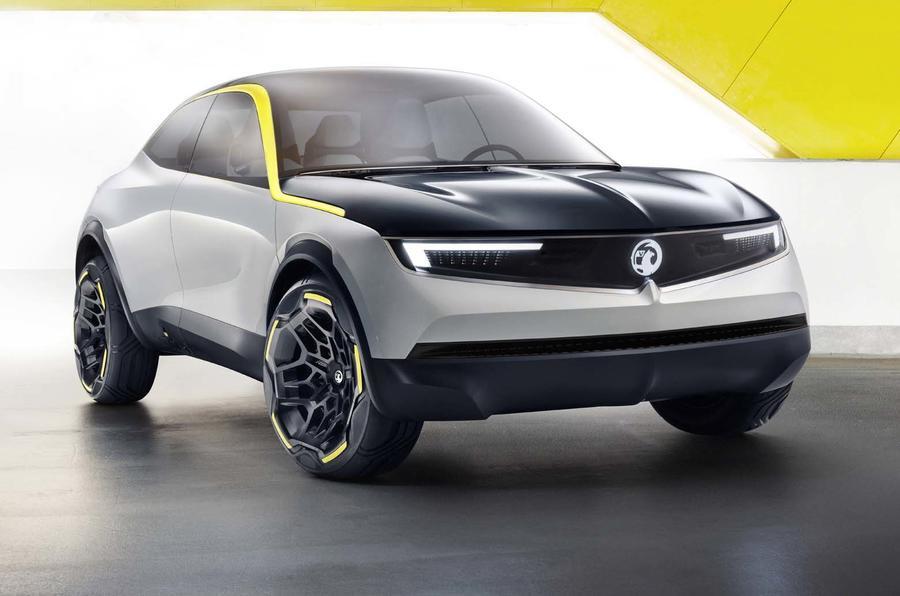
Unlike the GT X Experimental (pictured above), which evolved into the Mokka, this concept will not translate into a specific production car, said Adams. “One of your first questions will be: what production car is this going to be? I’ll pre-empt that by saying it’s going to be all of them,” he said. “Many of the ideas – in progressively different magnitudes – will find their way into the next wave of the future portfolio.”
The first Vauxhall to use elements of the Experimental’s design is expected to be the Grandland successor, due in 2025. That year, European Union regulations will begin to allow car manufacturers to illuminate their front badges, opening the door for Opel-Vauxhall to introduce its new-look front end.
Next up will be the Manta, a D-segment crossover due on sale in the UK in 2025. That will be followed around a year later by the smaller successor to the Insignia, which will ride higher than the liftback and estate that bowed out last year, but it will still prioritise aero efficiency – as indicated by the rakish Experimental.
Highlights of the Vauxhall Experimental concept
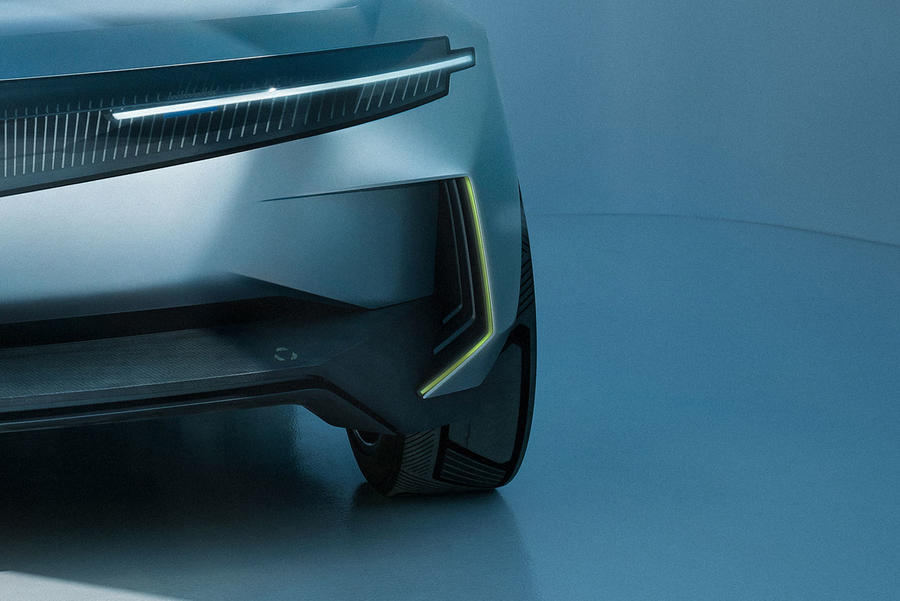
Active aerodynamics: The Experimental concept features ‘gills’ in the air dams at either end. These would open and close to different degrees to channel air according to driving conditions, prioritising either a reduction in drag to boost range, or extra brake cooling.
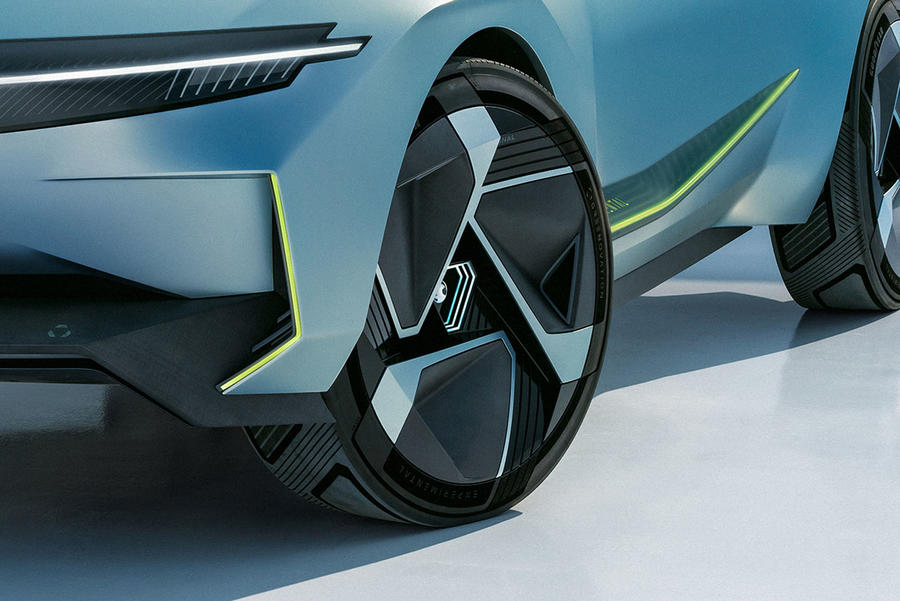
Wind-cheating wheels: Thought we left three-spokes in the ’90s? Think again: the Experimental’s Ronal-built alloys feature three large segments containing aerodynamic flaps, which can theoretically open and close to direct air under the car and reduce drag, or to help cool the brakes.
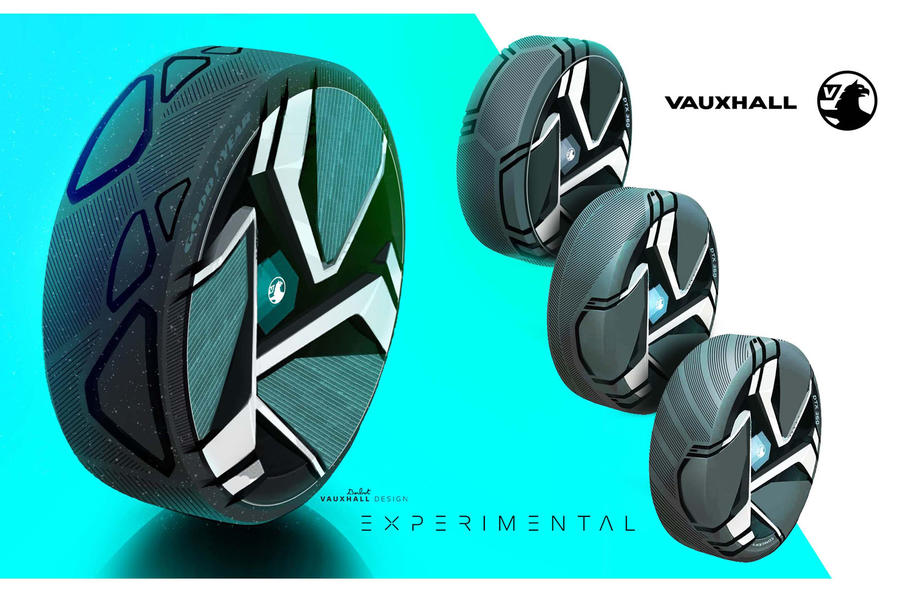
Single-piece tyres: The Experimental’s focus on sustainability extends to the tyres, produced by Goodyear using recycled rubber. These are made from a single piece of rubber rather than several layers, said Adams, making it easier to reuse the material.
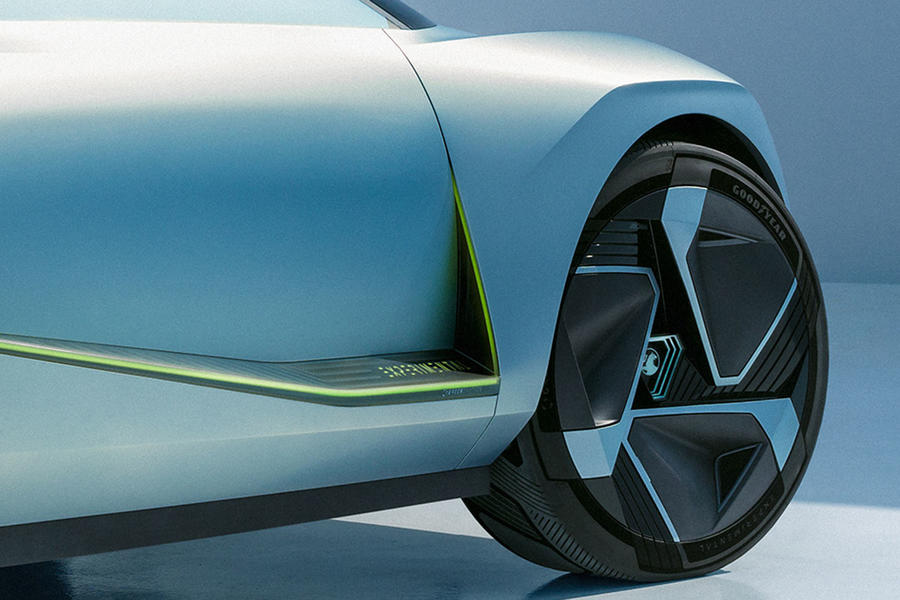
Brake dust filter: Brake and tyre emissions have become a significant concern as cars have grown heavier. One solution being explored by Vauxhall is to put filters in the path of air flowing past the tyres, capturing particles before they enter the atmosphere.
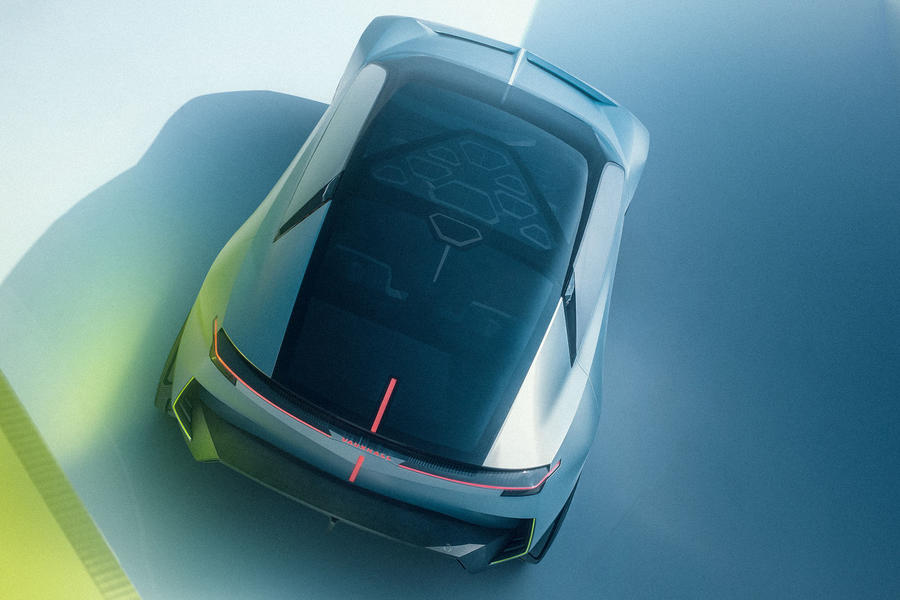
Solar roof: Solar panels are being considered as a means to keep an EV’s batteries topped up passively, complementing the regenerative braking system. A similar set-up on the Fisker Ocean is claimed to add 1500 to 2000 miles of range annually, depending on weather conditions.
Q&A: Mark Adams, vice-president of design, Opel-Vauxhall
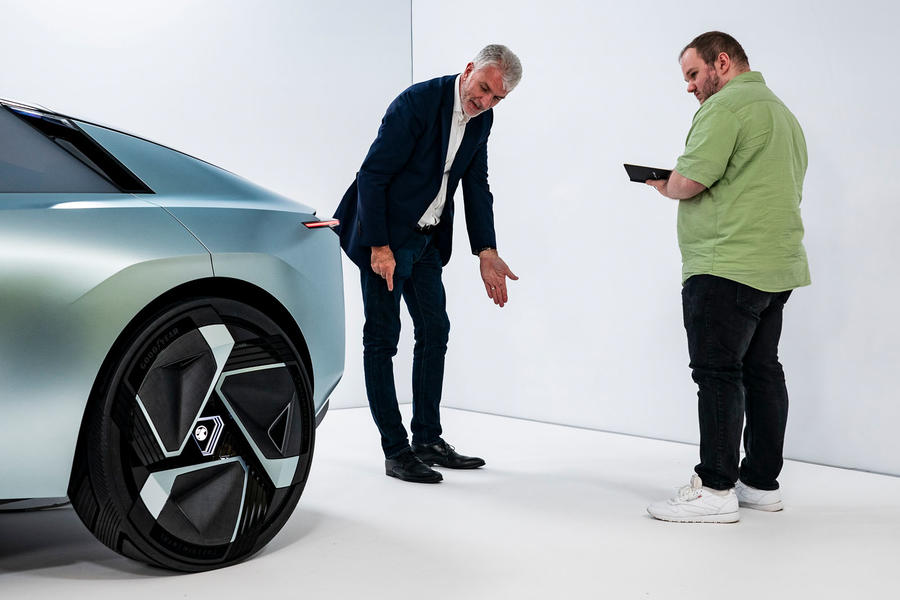
What is your favourite element of the Experimental?
“That would be like asking me who my favourite child is! I think for me, the three most important things in any great design are proportion, proportion and proportion. When you look at the words we use – ‘bold and pure’ – the only way you can make ‘pure’ work is to have great proportions. Because if it doesn’t have great proportions, and you do more simplified shapes, then they tend to look a bit boring.”
Is it deliberately more sporting than Vauxhall’s current SUVs?
“I think sporting is an appropriate [descriptor] because we do want our cars to feel sporty and dynamic. But we also have a portfolio. We don’t want every car to look the same, just in different sizes. That’s not great. We don’t want a clone effect. We want to have personality differences. A Corsa and a Mokka are more fun and youthful, and a car like this – maybe in the middle – is more sleek and sporty and dynamic than something else. You still need to have more functional cars, so we’ve got to have a bandwidth.”
Why get rid of chrome?
“When you talk about sustainability, it’s not just recycling. It’s about getting rid of things that are bad, right? And so if we need to live and breathe, doing the right thing for the future of the planet at a super-high level, then we’ve got to take even small steps. But we’ve got to take those sorts of steps and that’s why we’re really trying to walk away from those types of things. It doesn’t mean our cars today haven’t got some of those things in, but as we look forward, that’s an area that we’re definitely moving away from.”
Source: Autocar
